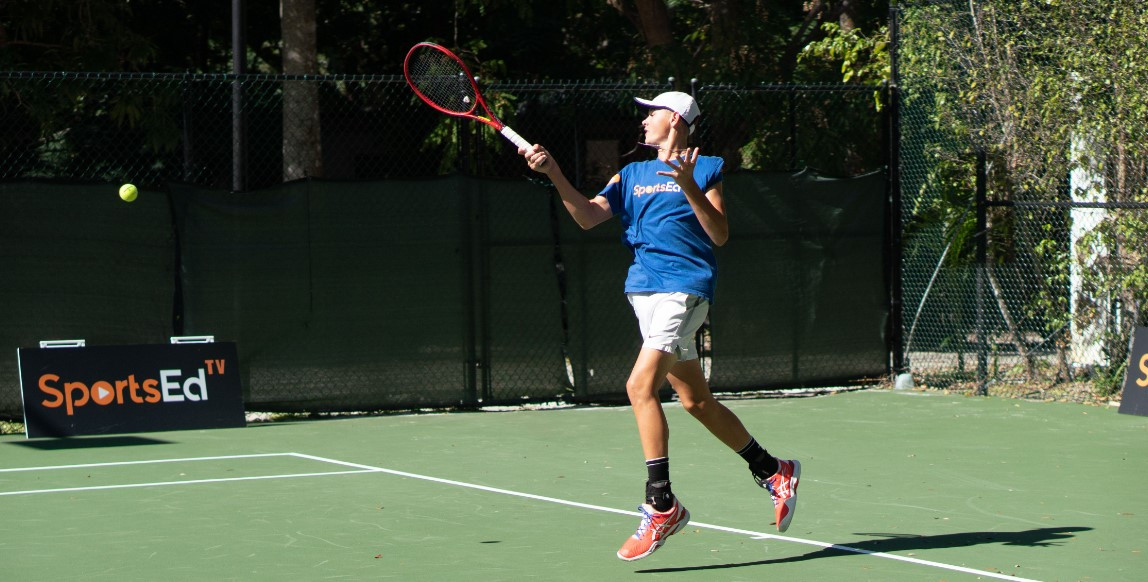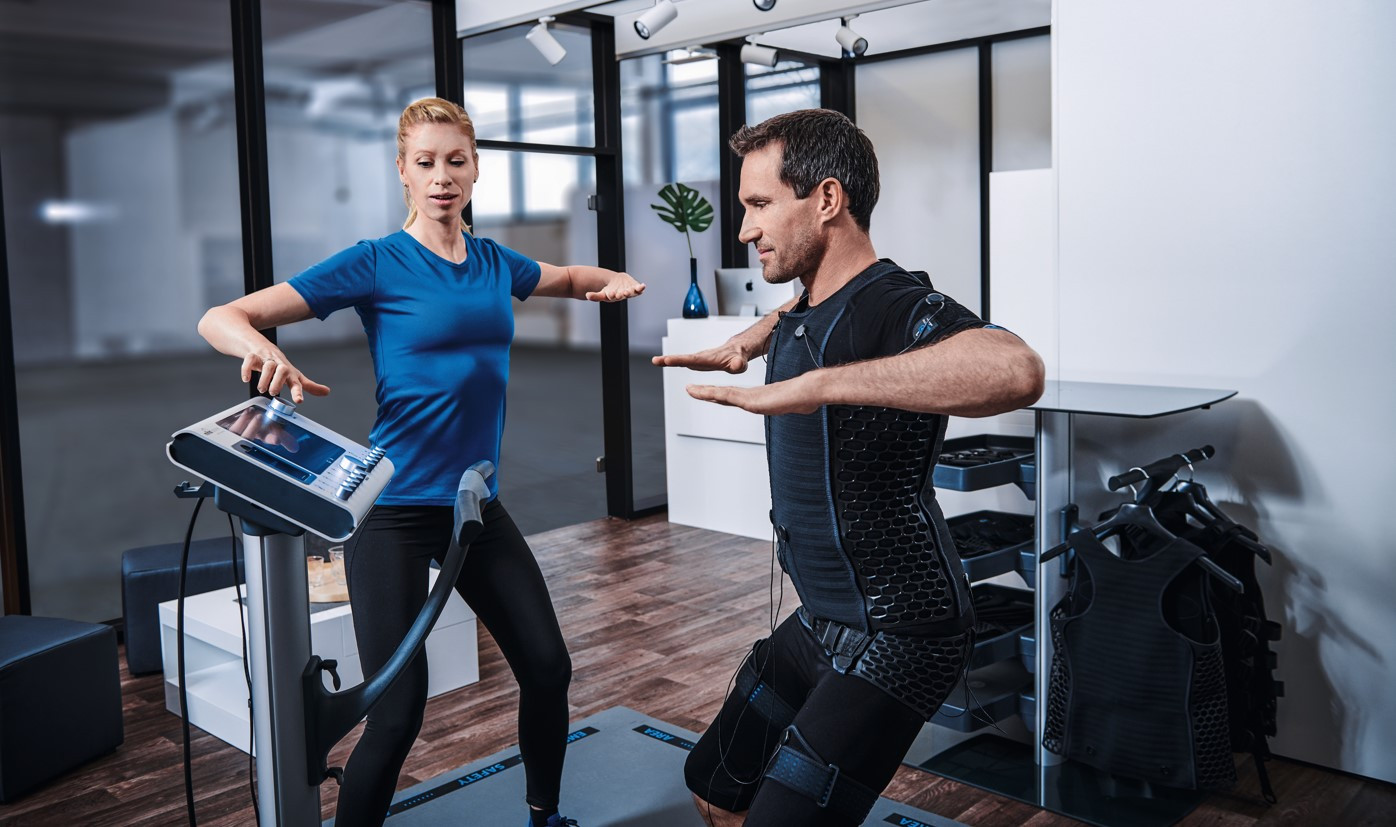Strength And Conditioning, Tennis
Welcome and thanks for visiting...

Elevate Your Tennis Game with EMS Training: A Comprehensive Guide

For decades, tennis has been celebrated as a sport that marries agility, stamina, and strategy. It's not just about delivering powerful serves or mastering forehand strokes; tennis requires an intricate balance of strength, speed, and finesse. With players continuously seeking to up their game, EMS (Electro-Muscular Stimulation) training emerges as a revolutionary method, promising transformative results in overall tennis performance and physical wellness.
Understanding the Science behind EMS
Electro-muscular stimulation, more commonly known as EMS, employs controlled electrical impulses to trigger muscle contractions. While our central nervous system naturally initiates these impulses, EMS amplifies this action, engaging almost 98% of muscle fibers. When juxtaposed with conventional training, which activates a lesser percentage of muscle fibers, the benefits of EMS become abundantly clear. Studies have indicated that EMS can effectively enhance muscle strength and endurance, which are invaluable in tennis. Read my previous article on how EMS works.
The Symbiosis of Tennis and EMS
- Balanced Muscle Development: Tennis, by nature, is an asymmetrical sport. Players repetitively use their dominant hand for serves and strokes, leading to disproportionate muscle development. EMS stands out by targeting and strengthening both the dominant and non-dominant sides, ensuring an equilibrium in muscle growth and reducing injury risks.
- Maximized Training Efficacy: Rather than exhaustive hours in the gym, EMS epitomizes efficiency. A compact 20-minute session can equate to a prolonged workout, allowing players more time on the court to focus on technique and strategy.
- Proactive Injury Management: Tennis is physically demanding, making players susceptible to various injuries, especially in the wrists, elbows, and knees. EMS not only aids in quicker recovery post-injury but also fortifies muscles, potentially preventing future injuries.
- Counteracting Muscle Degeneration: Age-induced muscle atrophy is an inevitable reality. However, studies suggest that EMS can combat this, aiding in maintaining muscle mass, strength, and functionality.
- Augmenting Cardiovascular Efficiency: Tennis is as much about endurance as it is about power. Extended rallies and long matches demand a well-conditioned cardiovascular system. By stimulating muscle fibers in different sequences, EMS can augment the efficiency of cardiovascular activities, ensuring players maintain energy and focus throughout matches.
- Enhanced Proprioception and Coordination: Apart from muscle strength, tennis demands excellent body coordination and proprioception (the body's ability to sense its position in space). By activating a wide range of muscle fibers, EMS aids in developing better neuromuscular coordination. This means improved racket handling, more accurate shots, and better on-court movement.
- Targeted Rehabilitation: Even with the best precautions, injuries are part and parcel of any sport. EMS can be employed to rehabilitate tennis players dealing with strains, sprains, or more severe injuries. Its ability to target specific muscle groups ensures effective and faster recovery, allowing players to return to the court sooner.

Why Tennis Enthusiasts are Migrating towards EMS
Recent research underscores EMS's benefits for sports enthusiasts, particularly tennis players. A study published in the Journal of Strength and Conditioning Research highlighted that when combined with traditional training, EMS yielded significant improvements in jump height and sprint times – both paramount in tennis.
Furthermore, another comprehensive study emphasized that athletes who incorporated EMS into their routine observed noticeable maximal strength and power advancements. This translates to stronger serves, quicker court coverage, and longer game stamina for tennis players.
The EMS Experience: What to Expect
For those new to the world of EMS, it's essential to understand what the experience entails. During a typical EMS session:
- Participants wear a suit fitted with electrodes.
- A trained EMS specialist will guide you through exercises while controlling the intensity of electrical impulses.
- The personalized session ensures each individual's needs and thresholds are respected.

Redefining Training for Tennis Professionals and Amateurs
EMS's versatility ensures it caters to both professional athletes and amateur enthusiasts. With tailored sessions, players can address specific areas, be it improving serve velocity or enhancing lateral movement speed.
Moreover, beyond just physical gains, the mental aspect is noteworthy. A fortified body invariably boosts confidence, ensuring players approach every match with heightened self-assuredness.
Integrating EMS into Tennis Training Regimes
To extract maximum benefits, it's crucial to integrate EMS harmoniously into one's training regime. Experts recommend starting with weekly sessions and gradually aligning them with tennis practices. Over time, as players become accustomed, the frequency and intensity can be modified.
Additionally, consulting with trained EMS specialists is invaluable. They can guide session structures, ensuring they complement tennis training sessions and don't lead to overexertion.
Potential Concerns and Addressing Them
Like any training regimen, it's natural to have concerns. Here are some common queries:
- Is EMS safe? Under the guidance of certified professionals and when employed correctly, EMS is entirely safe. It's vital, however, to communicate any discomfort during sessions.
- Will EMS replace traditional training? While EMS offers numerous benefits, it's most effective when used in conjunction with conventional tennis training. It should be viewed as a supplement, not a replacement.
- Are there any side effects? Some individuals may experience muscle soreness similar to traditional workouts. However, any persistent discomfort should be communicated to professionals.
In Summary
As the realm of sports continuously evolves, so do training methodologies. Backed by science and proven results, EMS quickly becomes the go-to for many tennis enthusiasts. Its ability to expedite strength building, injury prevention, and recovery makes it indispensable. For those seeking to elevate their tennis journey, introducing EMS into the mix might be the game-changer they've been awaiting. After all, every advantage counts in the fiercely competitive world of tennis.
Feel free to contact me here
See my other articles on EMS Training
How EMS Can Transform Your Fitness Routine
Elevate Your Tennis Game with EMS Training
The Untapped Power of EMS Training for Golf
Boost Your Pickleball Game with EMS
EMS for seniors: A youthful approach to fitness








